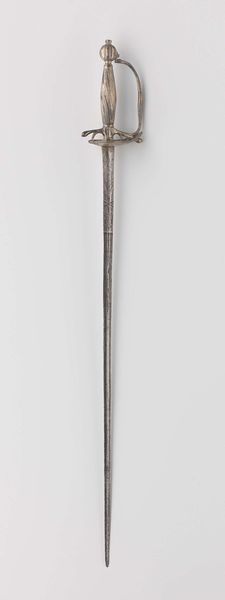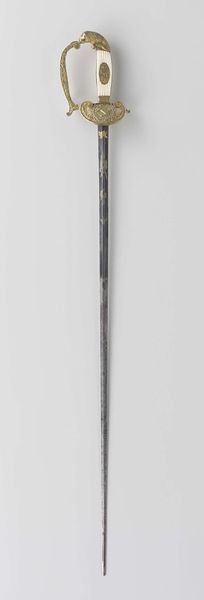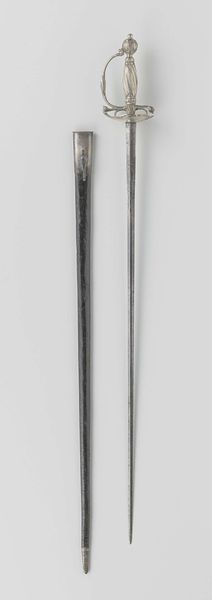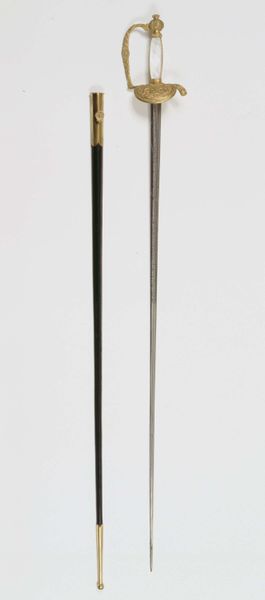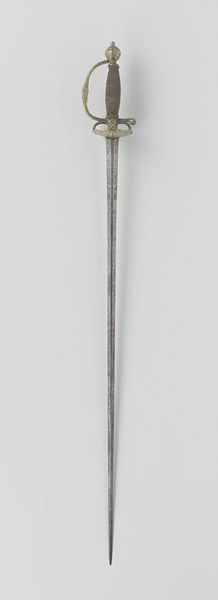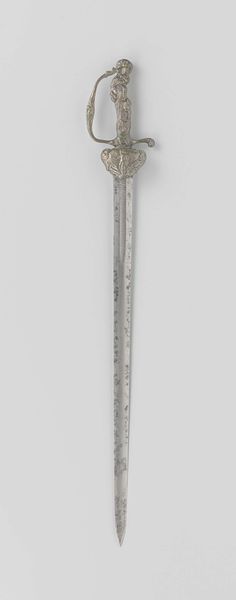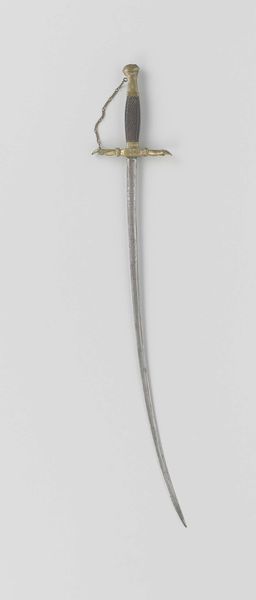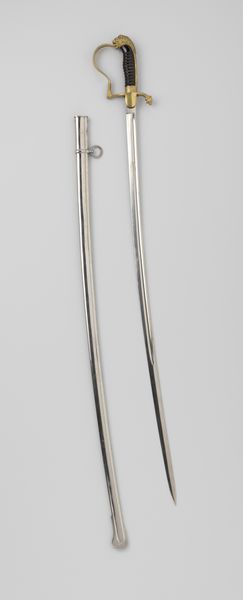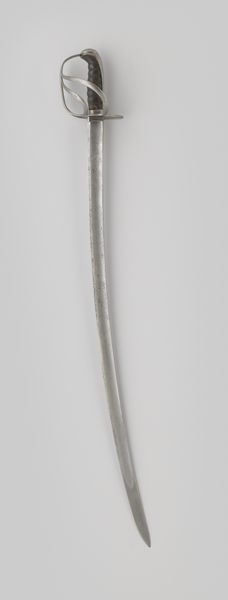
metal, sculpture
#
weapon
#
baroque
#
metal
#
sculpture
#
erotic-art
Dimensions: length 104.8 cm, length 92.4 cm, length 93 cm
Copyright: Rijks Museum: Open Domain
Editor: Here we have a rapier, crafted around 1675 and believed to have belonged to Michiel de Ruyter. The material is metal, making for quite the Baroque sculpture. It looks menacing, but beautiful in a strange way, and almost ornamental. How should we interpret such an object? Curator: We must consider the means of production. What sort of forge, what availability of material, would be required for such a rapier? De Ruyter's status gave him access to skilled metalworkers. This wasn't just a weapon; it was a symbol of power, made from valuable material obtained via Dutch trade routes. Editor: So, it's about more than just warfare. Is that a fair assumption? Curator: Exactly! The craftsmanship elevates it beyond pure functionality. Consider the handle’s ornamentation: Who created these motifs? How does the detailed craft represent power and, potentially, the spoils of war brought to bear on local economies? The creation is interwoven with class, conquest, and the consumption habits of the Dutch elite. Editor: Fascinating! It highlights a whole complex relationship involving material, labor, and status, doesn't it? Curator: Precisely. We can even investigate trade dynamics: where did the metal originate, and what other resources were exchanged for it? Even erotic art could inform an exchange rate with other trades. Each element whispers about the socioeconomic forces shaping its creation. Editor: I’ve never thought of a rapier telling such an economic story. Thanks to understanding all this, I view it differently now. Curator: And seeing those elements, opens up the history beyond De Ruyter himself.
Comments
rijksmuseum about 2 years ago
⋮
In 1675 Michiel de Ruyter was presented with this rapier with a blood-coral hilt by the Marqués de los Vélez, Spanish Viceroy of Naples. De Ruyter and his fleet had foiled an imminent attack by the French fleet in the Bay of Naples. The equestrian figure on the hilt is a reference to the name De Ruyter (The Cavalryman or Rider).
Join the conversation
Join millions of artists and users on Artera today and experience the ultimate creative platform.
